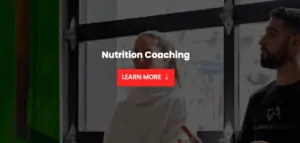In today’s society, most of our food choices (including how much we eat) are consistently influenced by external factors.
When we watch TV or visit a grocery store, we are encouraged to over-consume. When we search for advice regarding nutrition, we are, on the flip side, often encouraged to under-consume (carbs, fats, etc …).
Rarely, if ever, have we been taught to pay attention to one of the most important “signals” around food in existence: our own body and intuition.
What Is “Intuitive” Eating?

Intuitive eating is a method of eating that does just this: it encourages you to pay attention to your own personal hunger levels and food composition ( both are different from cravings, which we’ll get to in a moment) instead of labeling entire food groups as “good” or “bad” and avoiding them.
When you eat intuitively, you begin to listen to your body and what it wants, rather than ignoring your own cues and listening purely to “diet culture.”
Now, this doesn’t mean that if you get a craving for, say, candy or junk food, that you go out and indulge in it anytime you get the itch! Intuitive eating still remains within the framework of the 80% rule, meaning 80% of your diet, 80% of the time, is centered around whole, fresh foods, while the other 20% allows for indulgences and treats.
Eating intuitively takes this framework and brings mindfulness and awareness to what your body needs in terms of food on any given day. Our bodies are extremely intelligent, after all, and will typically send us cues as to what we need in terms of macro and micronutrients.
Recognizing these cues and differentiating them from cravings takes practice, of course, but the effort is worth it: Participants in intuitive eating studies improved their self-esteem, body image, and overall quality of life while experiencing less depression and anxiety [*]
What Does Eating Intuitively Look Like?
As mentioned earlier, eating intuitively doesn’t mean giving in to every craving for junk food you may have (we all have them!). It simply means noticing when your body might need a certain food, vs. another, or a different amount than a diet may tell you is “right.”
Take, for instance, carbohydrates. There are many low carb diets out there that would encourage you to severely limit your carbs, and often, these diets result in great success for many people! However: sticking to restrictive diets for longer lengths of time can eventually result in negative side effects, including low energy and reduced performance, simply because the body requires varied nutrients at varied times.
Eating intuitively would allow you to begin to tap in to when your body might be craving carbohydrates (say, after an intense workout where your glucose stores were depleted), and you could sense this and provide it with a clean, nutrient-rich source of carbohydrates, like sweet potato.
This isn’t to say you shouldn’t consider macronutrients, or follow a general template. We are a fan of this and practice a combination of macronutrient tracking and intuitive eating.
In fact, we encourage our clients to track for an extended period of time so they gain a better understanding of portion control and how to fuel themselves properly for their activity level. But, at the end of the day, we want our clients to first and foremost build a better relationship with their body and a deeper understanding of what it needs (more food, less food, more or less protein, fats, carbs, etc..) Both intuitive eating and tracking macros are excellent tools for living a healthier lifestyle. After all, you want to do what is most sustainable for you because the best plan is the one you’ll stick to!
These are a few principle to carry with you regarding intuitive eating:
1. Reduce the diet mentality, and focus on feeling better. This means consuming foods that make you feel healthy and good, both in the short and long term.
2. Listen to your hunger. If you’re ravenous, eat! This doesn’t mean you have to necessarily binge, but you shouldn’t feel guilty for eating a serving of whole, fresh food when you’re actually hungry.
3. Enjoy your food. Take the time to taste the textures and flavors of your meals. Really sink into the moment, and make your meals enjoyable with a variety of flavors. Savor every moment, even if you’re indulging. Avoid the guilt that follows after a once-in-a-while indulgence.
4. Acknowledge your body’s needs. If you feel you need carbs, honor this will a serving of clean carbs. If you’re drawn to fat, honor this with a healthy fat. If you’re craving sweets, grab a square of dark chocolate or a spoonful of raw honey.
Join us in the journey to eating intuitively and
reaching your goals in our Nutrition Coaching Program:
